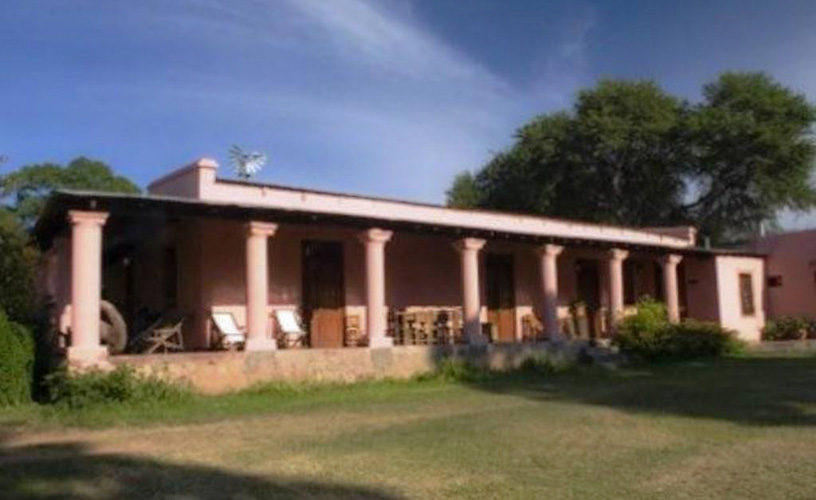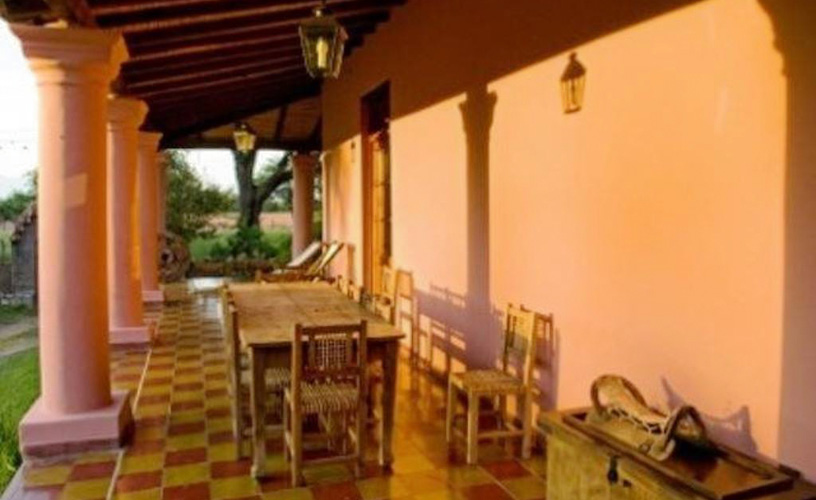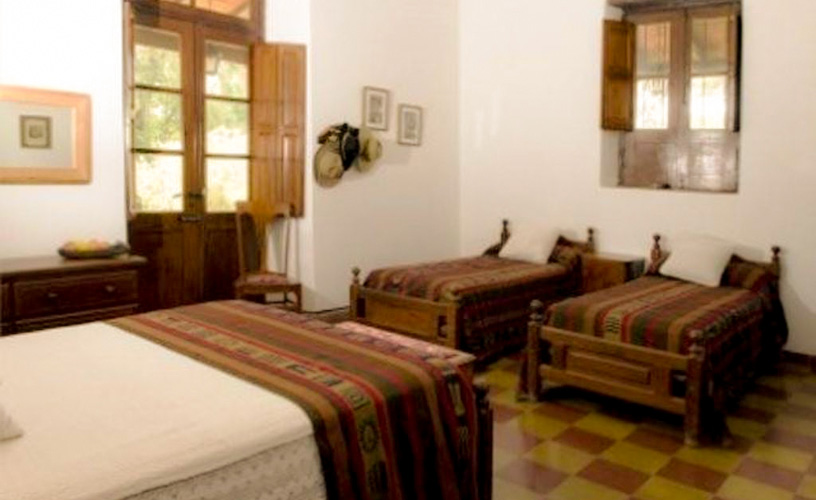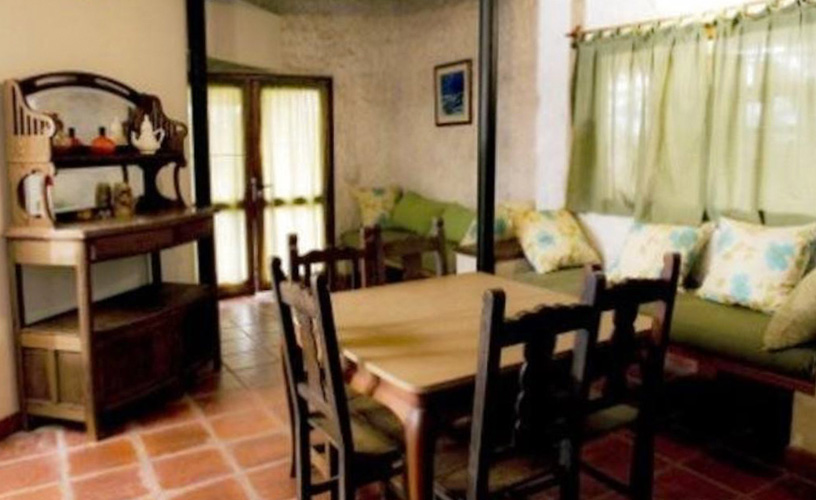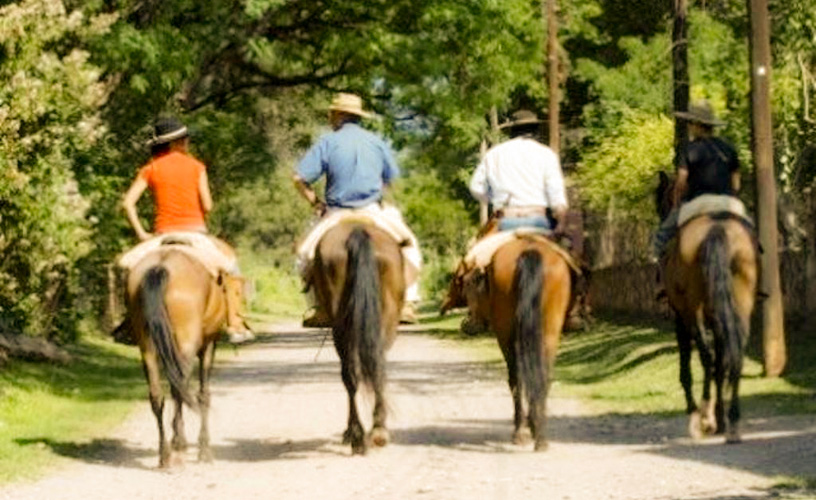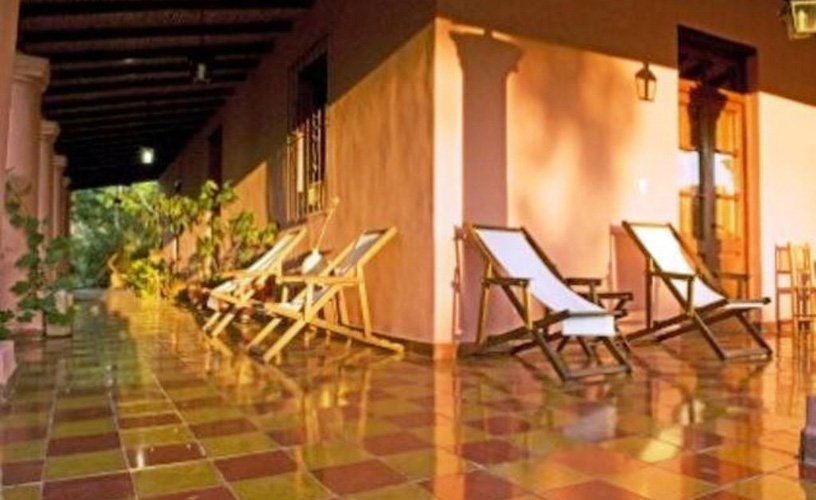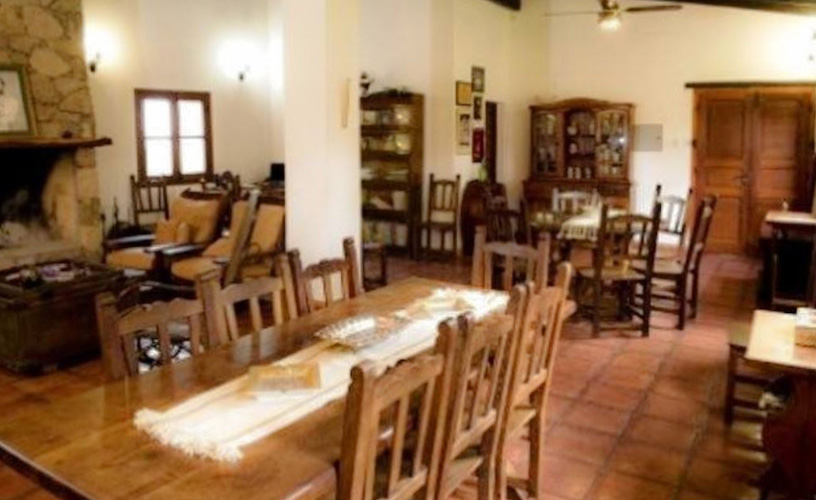Santa Anita and the History of Tobacco
We visited the Coronel Moldes country house, which has a private tobacco museum, ritual element of the Amerindian culture and present representative of the productive activity of the area.
As we got to Finca Santa Anita, the sun was shining on the fields sown with tobacco. Tupac, the rottweiler, and Pumba, the leader dog, pride of the house, came out to give us a warm welcome. Carlos Lewis, owner of the house and present mayor of Coronel Moldes, followed them. The main building in the property is a large ancient house, which used to work as a station post for the arrieros traveling from the old district of Guachipas to the city of Salta. Today, Santa Anita is a productive agricultural undertaking, surrounded by tobacco farms and typical local crops such as alfalfa, peppers and virreina. But also, since 1998, the finca has become a guest house that receives small groups of tourists assisted by the Lewises themselves. The family project has already received some acknowledgements, such as the Slow Food international recognition granted to Ana Valentina, Carlos’ wife and chef of the Finca, and an agricultural award to the development of human resources.
Now, Santa Anita is best-known for having the first private tobacco museum in the area. Carlos, self-defined as a ritual smoker, has tried to rescue the history of tobacco as part of the culture of a people. Carlos confesses: “I started collecting tobacco stuff when I was 14. After a couple of years, I already had a collection that in 1997 led me to set up this small museum in an old drying place.” Object of Worship A great part of the history of tobacco in Salta is kept in the three stoves made of clay dating from 1930. The first stove is entirely dedicated to the Pre-Columbian era and shows how the Amerindian cultures would use tobacco in their ritual ceremonies. Carlos explains that “they would smoke tobacco with cebil in pipes. Cebil was a hallucinogen very much used in religious ceremonies.” The pipes exhibited were donated by the wichi community. In the Popol Wu symbology and texts, the tobacco appears to be related to the most transcendental rites. The second stove represents the colonial times, mainly the beginning of the first tobacco producers. Those were the days of Cohiba, don Arturo D’Andrea’s company, where a mixture of tobacco and cenil was also elaborated. There are also records of the Villagran company, a tobacco producer coming from the North, very important in the area in the mid XX century. In the same room, a small sitting room for smokers with specialized books and magazines that give visitors more information about the tobacco culture is accessed through a staircase. The last stove maintains the characteristics of the primitive rooms used for crops and for drying tobacco leaves. And outside the rooms, an authentic tobacco press from the 1930’s is the protagonist of the shed along with other crop-related machinery. Country Life But the tobacco museum is not everything in the finca. In addition to hiking and horse-riding across the nearby mountain ranges, the Lewises invite visitors to share part of their rural activities. One may see and experience the way homemade bread is baked in a clay oven, how the horses are prepared with gaucho harnesses, and how to milk the goats in order to make jams and cheese. Visitors can also get deep into the history of the finca by seeing a collection of ancient riding pieces, horseshoes and coins dating back from the days of the colony, when Santa Anita was a place for resting and the mandatory road across the Calchaquíes and Guachitas Valleys towards the Sumalao Fair and Salta. We would have liked to go across those fields on some Peruvian Argentinian horse, but we had to continue up to the Cabra Corral dam, which in the distance showed its water mirror from the gallery. When we said our good-byes to Carlos in order to continue walking, we made the promise to return in order to enjoy a day in this countryside property.
Karina Jozami
Gentileza Finca Santa Anita
Contact of the excursion or tour
Finca Santa Anita
A 65 km. Salta- Coronel Moldes, Salta, Salta, Agentina
Phone: +54 387-4905050
Cell phone: +54 387-831089
